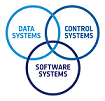GENEVIS presents full-software, Vision-Based Navigation (VBN) solutions for space rendez-vous and landing. Emphasis is put on the genericity of the algorithms, where the image processing techniques used to retrieve vehicle localization information are applicable to a wide range of environments. The proposed hybrid navigation filter that fuses inertial and (terrain or target-spacecraft)...
The increased complexity of computer-vision algorithms in space on-board applications and also the data fusion of measurements acquired from various on-board instruments and sensors (e.g. LIDAR and hyperspectral images) mandate the development and use of high-performance avionics to provide one or two order of magnitude faster execution than today's conventional space-grade processors and even...
The aim of this presentation is to describe the foreseen avionic solution for the Vision Based Navigation (VBN) functions of the European Large Logistic Lander (EL3)
The VBN functions of EL3 require computationally intensive algorithms, which results in the need for an appropriate supporting avionic hardware. In particular, the need for a quad-core processor hardware and for an additional...
Last advances of Thales Alenia Space on the integration and validation of visual-based navigation will be presented based on the lead of the recent H2020 projects I3DS and EROSS. The avionics architecture of the proposed solution will be presented along with the sharing chosen between the On-Board Computer (OBC) functions related to the platform control, and the Instrument/Robotic Control Unit...
The ClearSpace-1 mission will be the first attempt in the history to remove a debris in space. Funded in the framework of ESA’s Active Debris Removal/ In-Orbit Servicing (ADRIOS) project, the mission aims at capturing and deorbiting Vespa, a rocket upper stage left in an approximately 800 km by 660 km altitude orbit after the second flight of ESA’s Vega launcher back in 2013.
Spaceborne...
In February 2020 the first GEO satellite servicing mission started with the successful docking of Northrop Grumman’s (NG) Mission Extension Vehicle (MEV) MEV-1 with Intelsat IS901. The automated docking was guided by a set of vision systems of which Jena-Optronik GmbH provided the 3D LIDAR system, a visual camera system with six optical heads and two star sensors. Jena-Optronik’s 3D LIDAR,...

